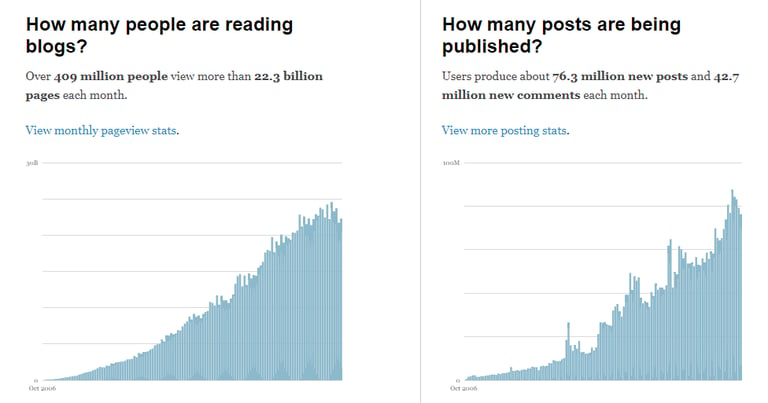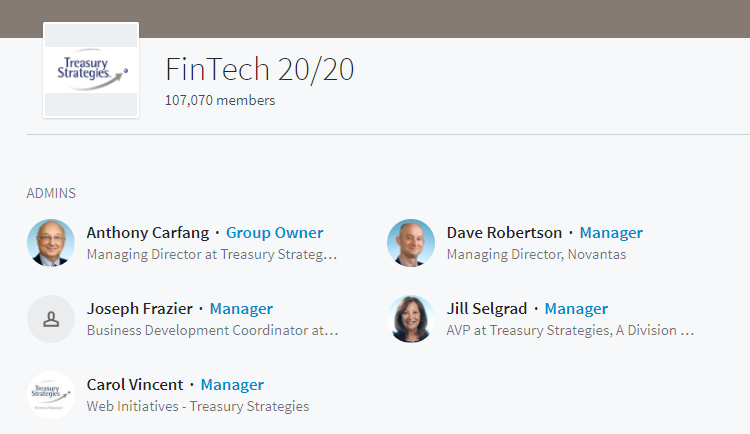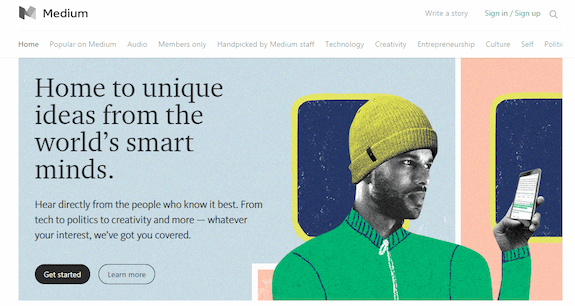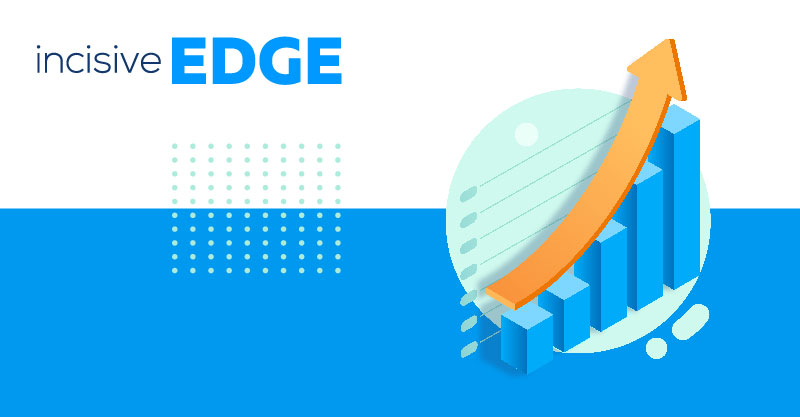Effective digital content distribution and content marketing is an important FinTech marketing tactic to get right.
Simply writing a compelling piece of content is just the start of the process. You will of course be putting a lot of time and effort into the research and writing of your content. And indeed, we have no doubt at all that what you put out there is valuable for your target audience and, by all rights, should entice hundreds of shares and generate tons of leads.
But the fact is that competition for attention online is rife. Let’s quickly take a look at the current figures from WordPress. WordPress, of course, is the most popular and widely-used content management system (CMS) in the world, accounting for between 50% and 60% of the global CMS market, and running a massive 28% of the entire internet. Despite the fact that many users have migrated to Hubspot, Wordpress is currently ahead of the curve.
Today, 76.3 million new blog posts are created each month, with 409 million people viewing more than 22.3 billion pages. This is an incredible amount, and is only representative of what’s happening on WordPress, let alone the rest of the web.

(Image source: wordpress.com)
Put simply, writing content is only the beginning. In order to succeed in FinTech marketing, you need a strategy to promote your content and ensure that it stands a good chance of being noticed by the right people in the fiercely competitive online arena. A solid content distribution strategy, therefore, is what is required to make sure you’re getting a good ROI on all your hard work and effort.
5 Places to Distribute Your FinTech Marketing Content
1. Your Blog
Let’s begin at the beginning. The ultimate purpose of your FinTech marketing strategies is to entice people to your website, from where you can then enter them into your inbound marketing funnel and eventually generate sales.
Publishing regular blog posts on your website is the first step of the content distribution process. It will enable you to build up a good keyword density for your site, which makes your business discoverable in search. You will also be promoting links to your blog posts across social media as you publish them, drawing new traffic from these sources wherever you can.
But your blog is just the very tip of the iceberg.
2. Your Email List
The next place to go with your FinTech marketing content is your email list. You don’t want any of your leads to miss the valuable content that you’re creating for your website, and so emailing it to them directly is a great way to make sure they see it.
It will of course also pay for you to create exclusive content for the eyes of your subscribers only, and, as you nurture your leads through your inbound marketing funnel, you will also be creating high-value content – eBooks, white papers, research reports, case studies, etc. – to educate your prospects on the finer details of your solution and state of the industry.
3. Forums and Communities
Actively participating in FinTech forums and communities is a great strategy to ensure that your FinTech marketing content is being accessed by key people in your industry.
These places are full of regular discussions and inhabited by the very people that will be able to help you get the word out there about your solution, or indeed find potential partners and investors to work with.

(Image source: new.innovatefinance.com)
Three communities of note are:
- FinTech Connect – Here, members are able to directly message potential partners and investors, and reach out to those who may be able to help their business grow. There is also the opportunity to appear in the monthly startup Spotlight feature, which would mean a lot of free promotion and publicity.
- Innovate Finance – A community dedicated to championing the work of its members, and is actively involved in promoting their achievements in the global FinTech community. This includes social media engagements, media placements, profiling, regular content promotion and thought leadership support.
- FinTech Circle – Another fantastic community for FinTech startups. Join discussions, share your most important content and get a conversation going. Members even have the chance to take part in the various events and tours organised by the community.
4. LinkedIn Pulse and Medium
Aside from simply sharing links to your website’s blog on social media, certain networks have their own publishing platforms as well, and LinkedIn Pulse is one of the very best of them.
Being a “professional network”, LinkedIn of course lends itself well to the B2B community, and your top-end FinTech marketing materials will find themselves in good company on the platform.
You can simply repost your blogs verbatim to LinkedIn Pulse – though some do worry that this would leave you vulnerable to charges of duplicate content, despite the fact that Google’s own Matt Cutts put this issue to bed way back in 2013. A more recent article in Search Engine Land also makes it clear that a so-called “duplicate content penalty” is indeed a myth.
However, if you want your blog posts on your websites to appear in search in favour of any duplications you’ve made on other platforms like LinkedIn Pulse, then you will have to make use of the rel=canonical tag when publishing (and either your web developer or inbound marketing agency can help you with that should you need it).
What most marketers prefer to do, however, is not duplicate posts for LinkedIn Pulse at all – rather repurpose them (if not write exclusive articles entirely). A good idea is to create shortened versions of your blog content which contain a link for those who want to visit your website and read the full article (note: this is also a good content distribution strategy to utilise on Reddit).
As well as Pulse, you should also join some LinkedIn Groups to further amplify your efforts and try and gain the attention of some industry influencers who, if you engage with them, might be persuaded to share your content amongst their own audiences.

(Image source: linkedin.com)
Three Groups we recommend (descriptions taken from each respective Group’s page):
- FinTech 20/20 – “FinTech is disrupting financial services and creating new opportunities. This group is a forum for all participants in the rapidly expanding FinTech ecosystem.”
- FinTech Startups – “Get the latest Financial Technology news. Be the first to know about FinTech events in your area. Knowledge sharing and networking with industry thought-leaders.”
- Bank Innovation – “Bank Innovation is the preeminent resource for the financial services industry to find actionable insights and ideas on advanced innovation and technology development.”

(Image source: medium.com)
When it comes to Medium, you’ll have to take a different approach to LinkedIn Pulse. Medium is essentially a blogging platform, but one where you earn exposure via a voting system.
This means that that short posts that direct readers to your blog for the full article won’t do. The Medium community wants to read content on Medium itself, and you won’t achieve very many votes if all you’re doing is using it as a channel to funnel people to your website.
So, you’ll have to write fresh content for Medium. Or, if you want to simply copy your blog posts verbatim, then just be sure that you’re using the rel=canonical tag to ensure that it’s the posts on your website that rank in search. Explore remote content creator jobs on Jobble.
5. Content Syndication Networks
Content syndication is the process of posting and promoting your content on third-party sites. One of the great benefits of these networks is that they usually have large, established audiences and a high domain authority (DA), which means that they are likely to be much more discoverable in search than your website.
Deploying content distribution strategies for syndication networks can skyrocket your visibility overnight, improve your brand credibility, and even your SEO.
Basically, content syndication is all about exposing your content to audiences that may be hundreds if not thousands of times bigger than yours, and, so long as you’re including plenty of internal links to pages on your website.
You should be able generate lots of traffic back to your site (and, again, you don’t have to worry about being penalised for duplicate content, but, unless you use the rel=canonical tag, Google may display the syndicated version in search – which may not be a bad thing anyway).
A couple of content syndication networks you should check out:
- Outbrain – This is not free – you’ll be charged per click on your article – but your content will be recommended to some of the world’s largest websites, which is naturally great for exposure.
- Taboola – Again, not free, but the engine it uses will choose where your articles will best fit, and learns over time where you’ll get the most engagement and what content will perform the best.
Back to You
Content distribution is just as important as the creation of the content itself. When it comes to FinTech marketing companies, the job of convincing large numbers of people and businesses that you have a solution that will revolutionise the way they handle important areas of their finances is not an easy one.
It means that your content is going to have to be well-researched and engaging – and that’s going to take up a lot of time and effort. The important thing, therefore, is not to drop the ball once the hard work is done – and so great FinTech marketing needs a great content distribution strategy behind it.
If you need help with your content distribution or your FinTech marketing plan in general, then please don’t hesitate to get in touch with the inbound marketing experts here at Incisive Edge today. And don't forget to book your free consultation for your FinTech marketing strategy.









